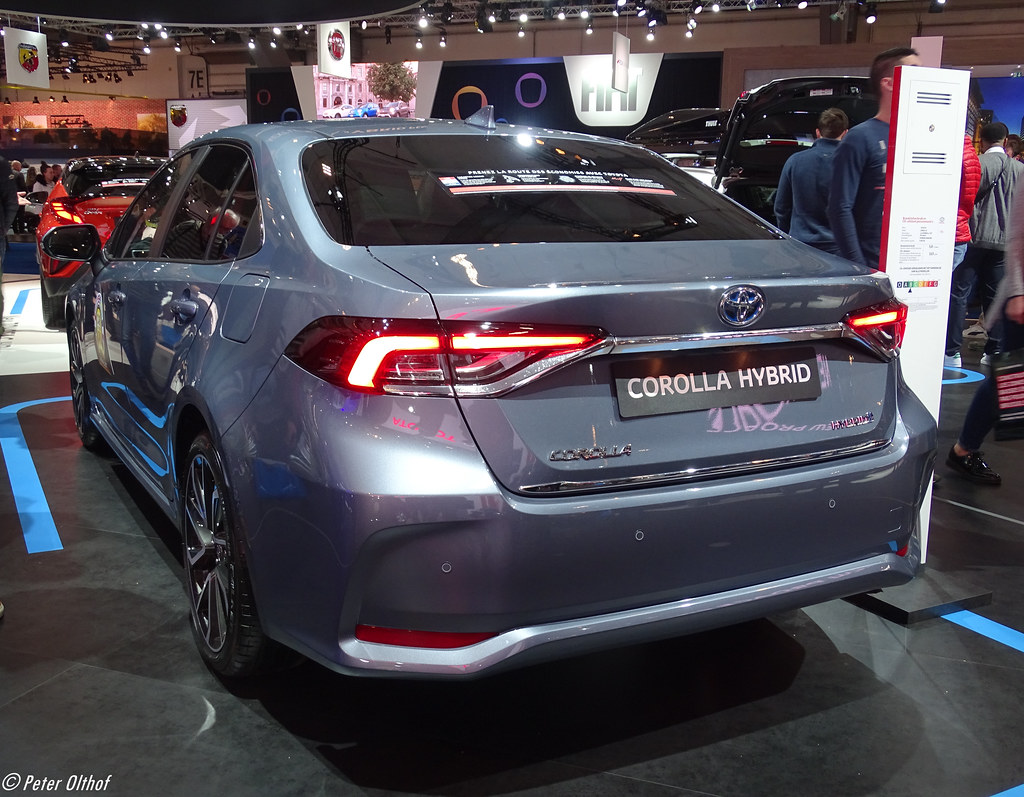
The 1960s! What a decade, right? It was a time of seismic shifts, from culture and music to politics and, yes, even the very cars we drove. This wasn’t just about getting from point A to point B; it was about making a statement, embracing freedom, and feeling the raw power beneath your fingertips. America’s highways buzzed with a new kind of energy, fueled by machines that were as much cultural icons as they were modes of transport.
Detroit was truly the car capital of the world, churning out everything from innovative compacts to regular family sedans, and, of course, those sublime muscle and sports cars that still get our engines revving today. The American car industry was thriving, delivering fantastic vehicles in all segments, showcasing a fearless ambition that mirrored the country’s spirit during a transformative era. These cars were designed with a mission: to rule the street, and rule they did, without apology.
We’re talking about vehicles that invited attention with their wide stances and a deeper meaning for anyone who loved the open road. Beneath their steel skin lived something untamed, something that made drivers feel alive in ways modern cars often forget. They brought fire to a decade already full of heat, and trust us, that spark is still very much alive today. So, buckle up, because we’re taking a joyride through memory lane to celebrate the absolute legends of American automotive style and performance from the swinging sixties!
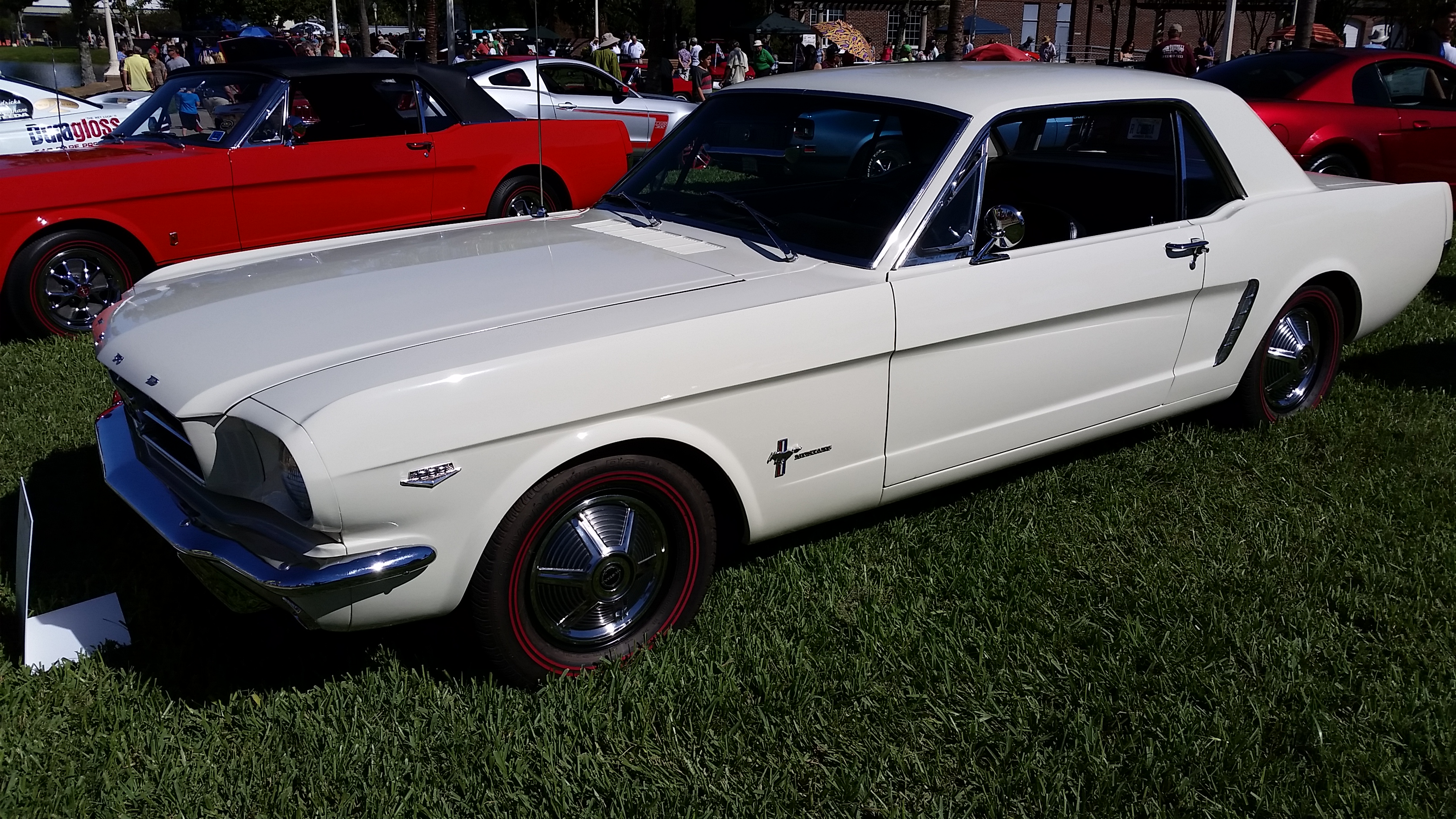
1. **1964½ Ford Mustang**The moment the 1964½ Ford Mustang burst onto the scene at the New York World’s Fair, it didn’t just make a splash—it unleashed a full-blown tsunami, igniting the legendary “pony car” craze that reshaped American automotive history forever. With its sleek looks, impressive power, and surprisingly accessible price tag, this beauty was an instant sensation. It wasn’t merely a new model; it was a revolution, perfectly capturing America’s burgeoning love affair with sporty, accessible cars that delivered a thrilling ride.
More than just a vehicle, the Mustang quickly transcended its metal and chrome to become a vibrant symbol of youthful energy, unbridled freedom, and the pure exhilaration of driving thrill. It spoke to a generation hungry for individuality and excitement, offering a customizable canvas for personal expression. Its blend of everyday usability with a sporty demeanor made it an undeniable hit, gobbling up “a million units of these stallions” by young people looking for that distinctive “roar of a pony car with enough power” in the immediate years after its April 1964 introduction.
Even decades later, the Mustang’s legacy continues to roar strong, captivating the hearts of car lovers and firmly holding its place as an enduring American icon. This isn’t just a car; it’s a feeling, a memory, and a testament to an era when design, accessibility, and performance converged to create something truly magical. The Mustang wasn’t just built; it was born, setting a benchmark for an entire class of vehicles and paving the way for countless automotive dreams, even serving as “Lee Iacocca’s passport to the position of Chrysler’s CEO 16 years later” due to its unprecedented success.
Car Model Information: 2022 Ford Mustang GT Premium
Name: Ford Mustang
Caption: 2018 Ford Mustang GT 5.0
Aka: Ford T5 (Germany)
Manufacturer: Ford Motor Company
Production: March 1964 – present
ModelYears: 1965–present
Class: Unbulleted list
BodyStyle: Unbulleted list
Layout: Front-engine, rear-wheel-drive layout
Categories: 1970s cars, 1980s cars, 1990s cars, 2+2 coupés, 2000s cars
Summary: The Ford Mustang is an American automobile manufactured and marketed by Ford since 1964, as Ford’s longest nameplate in continuous production. Currently in its seventh generation, it is the fifth-best selling Ford car nameplate. The namesake of the “pony car” automobile segment, the Mustang was developed as a highly styled line of sporty coupes and convertibles derived from existing model lines, initially distinguished by its pronounced “long hood, short deck” proportions.
Originally predicted to sell 100,000 vehicles yearly, the 1965 Mustang became the most successful vehicle launch since the 1927 Model A. Introduced on April 17, 1964 (16 days after the Plymouth Barracuda), over 400,000 units were sold in its first year; the one-millionth Mustang was sold within two years of its launch. In August 2018, Ford produced the 10-millionth Mustang; matching the first 1965 Mustang, the vehicle was a 2019 Wimbledon White convertible with a V8 engine.
The success of the Mustang launch led to multiple competitors from other American manufacturers, including the Chevrolet Camaro and Pontiac Firebird (1967), AMC Javelin (1968), and Dodge Challenger (1970). It also competed with the Plymouth Barracuda, which was launched around the same time. The Mustang also had an effect on designs of coupes worldwide, leading to the marketing of the Toyota Celica and Ford Capri in the United States (the latter, by Lincoln-Mercury). The Mercury Cougar was launched in 1967 as a unique-bodied higher-trim alternative to the Mustang; during the 1970s, it included more features and was marketed as a personal luxury car.
From 1965 until 2004, the Mustang shared chassis commonality with other Ford model lines, staying rear-wheel-drive throughout its production. From 1965 to 1973, the Mustang was derived from the 1960 Ford Falcon compact. From 1974 until 1978, the Mustang (denoted Mustang II) was a longer-wheelbase version of the Ford Pinto. From 1979 until 2004, the Mustang shared its Fox platform chassis with 14 other Ford vehicles (becoming the final one to use the Fox architecture). Since 2005, the Mustang has used the D2C platform, unique to the Mustang.
Through its production, multiple nameplates have been associated with the Ford Mustang series, including GT, Mach 1, Boss 302/429, Cobra (separate from Shelby Cobra), and Bullitt, along with “5.0” fender badging (denoting 4.9 L OHV or 5.0 L DOHC V8 engines).
Get more information about: Ford Mustang
Buying a high-performing used car >>>
Brand: Ford Model: Mustang
Price: $38,956 Mileage: 21,117 mi.
Read more about: Recall These? The Ultimate Showdown: 12 Coupes That Went From Hot to Humiliating in the Great American vs. European Car Wars
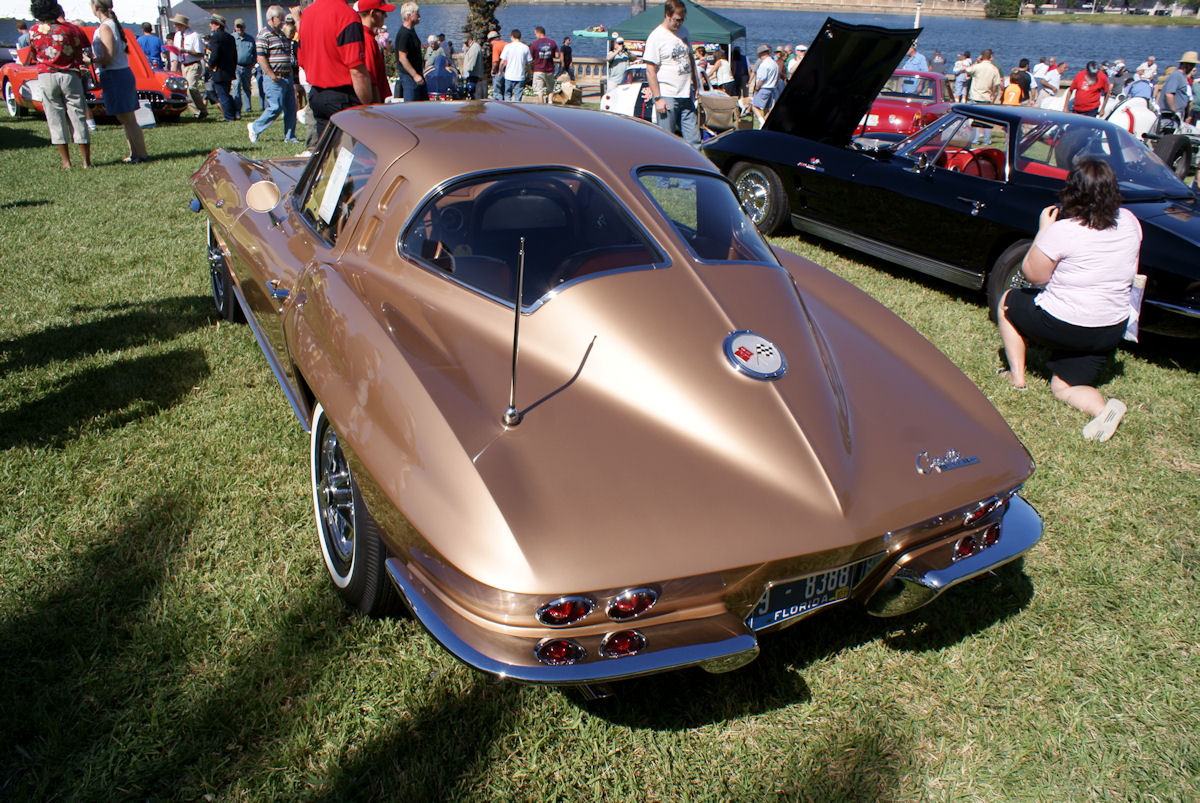
2. **1963 Chevrolet Corvette Sting Ray (Split-Window)**Hold onto your hats, because the 1963 Chevrolet Corvette Sting Ray wasn’t just a car; it was a bona fide masterpiece, redefining what an American sports car could be with its absolutely iconic split rear window and breathtakingly aerodynamic design. This wasn’t just about looking good; it was about a bold blend of style, cutting-edge engineering, and powerful V8 performance that sent shivers down the spines of enthusiasts and racers alike. It was a clear signal that the future of American sports cars was sleek, fast, and incredibly tech-savvy.
The Sting Ray’s innovative fiberglass body and independent rear suspension weren’t just technical achievements; they were declarations, showcasing a forward-thinking approach that effortlessly “rivaled any Jaguar or Ferrari” of its time. This car wasn’t afraid to push boundaries, offering a driving experience that was as thrilling as its appearance. It embodied American ingenuity, speed, and ambition, becoming a lasting symbol of automotive excellence that continues to inspire generations of car lovers and collectors around the globe.
To this day, the 1963 split-window coupe design remains one of the most recognizable Corvettes ever made, a true collector’s dream. Its unique design, storied racing pedigree, and profound cultural impact ensure its celebrated place in automotive history. The Sting Ray isn’t just a classic; it’s a testament to a time when designers and engineers dared to dream big, creating a machine that looked like it was going 100 mph even when standing still.
Car Model Information: 2024 Jeep Wrangler Sport
Name: Chevrolet Corvette (C2)
Caption: 1963 Chevrolet Corvette Sport Coupe
Manufacturer: Chevrolet
Aka: Chevrolet Corvette Sting Ray
Production: August 1962–July 1967
ModelYears: 1963–1967
Platform: Series 0800 (1962-1964),Series 194 (1965-1967)
Chassis: Body-on-frame
Assembly: St. Louis, Missouri
Predecessor: Chevrolet Corvette (C1)
Successor: Chevrolet Corvette (C3)
Class: Sports car
BodyStyle: Convertible (car),coupé
Layout: Front-engine, rear-wheel-drive layout
Engine: {{cvt,327,cuin,L,1,Chevrolet small-block engine (first- and second-generation)#327,V8 engine
Wheelbase: cvt
Length: cvt
Width: cvt
Height: cvt
Weight: cvt
Transmission: manual transmission,manual transmission,Powerglide
Related: Bill Thomas Cheetah
Designer: Larry Shinoda
Categories: 1960s cars, All articles needing additional references, All articles with specifically marked weasel-worded phrases, All articles with unsourced statements, Articles needing additional references from July 2024
Summary: The Chevrolet Corvette (C2) is the second-generation Corvette sports car, produced by the Chevrolet division of General Motors (GM) for the 1963 through 1967 model years.
Get more information about: Chevrolet Corvette (C2)
Buying a high-performing used car >>>
Brand: Chevrolet Model: Corvette Sting Ray
Price: $35,495 Mileage: 13,505 mi.
Read more about: America’s Iconic Sports Car: Decoding the Most Problematic Corvette Models in History to Help You Buy Smart
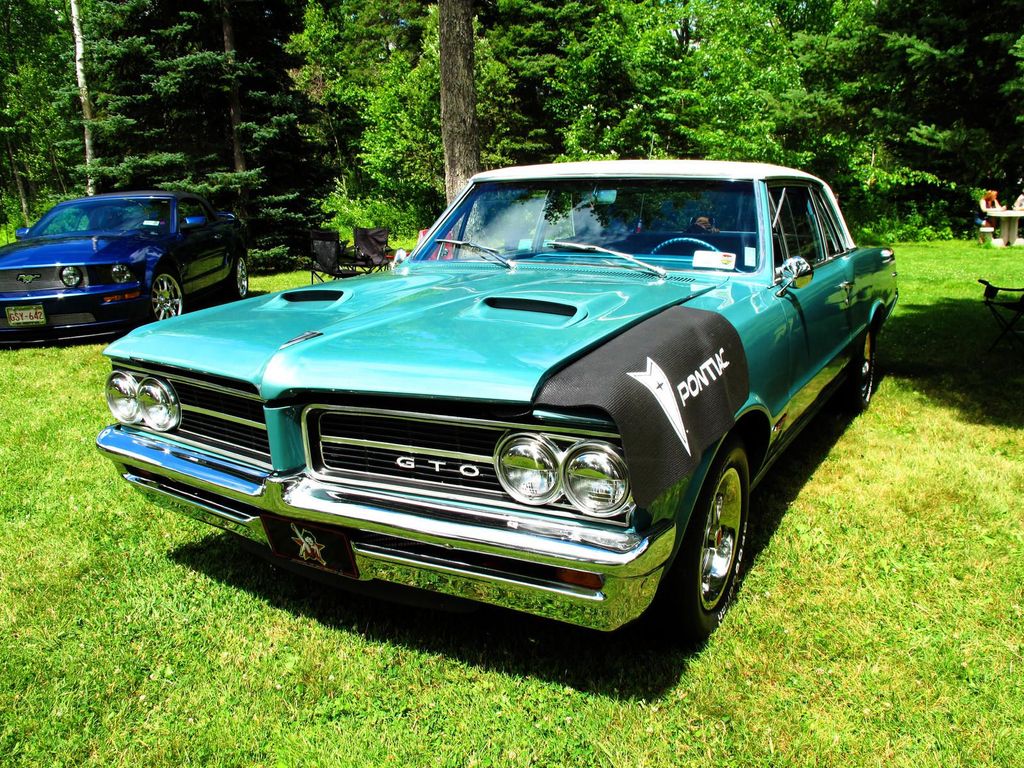
3. **1964 Pontiac GTO**Let’s be real, the 1964 Pontiac GTO was more than just a car; it was a seismic societal shift, carrying the very spark that ignited an entire movement—a movement you can probably “blame… for all the Mustangs doing burnouts at car meets now.” Often hailed as the first true muscle car, the GTO fearlessly merged a midsize body with a ferociously powerful V8 engine, effectively birthing an entirely new class of American performance vehicles. It was John DeLorean and his crew who brilliantly “snuck a big engine (the optional 389 cubic inch V8 was rated at 325 horsepower in 1964, but we all know it was more) into a mid-size Tempest.”
This wasn’t about subtlety; it was about bold styling, roaring acceleration, and an undeniable street presence that immediately captivated thrill-seeking drivers. The GTO blended size, unmistakable style, and “neck-snapping speed” in a way that felt rebellious and utterly exhilarating. It quickly “won over thrill-seeking drivers and set a high bar for competitors” who scrambled to catch up.
Rolling through town in one of these meant owning every block, likely making “other drivers question their life choices” as that “thunderous V8 rumble” announced your arrival. It brought muscle to the masses with confidence and ease, offering big-block power for a relatively affordable price. The GTO didn’t just influence car design; it sparked a full-blown horsepower race among manufacturers, becoming the undisputed benchmark for muscle cars throughout the golden era of American horsepower.
The body looked strong, clean, and confident, but what it could do on the street gave it a different kind of voice. It brought muscle to the masses with confidence and ease, offering big-block power for a relatively affordable price. Drivers felt like they had control of something bigger than just a machine, something that “whispered ‘trouble’ in the most alluring way.” This isn’t just a car; it’s “OG muscle,” leaving a deep impression that no modern vehicle, no matter how many turbos it boasts, could ever fully replicate.
Car Model Information: 1966 Pontiac GTO Coupe
Name: Pontiac GTO
Caption: 2005 Pontiac GTO
Manufacturer: Pontiac (automobile),Holden
Class: Mid-size car,Compact car,Mid-size car
Production: 1963–1974,2003–2006
Predecessor: Pontiac Tempest
Layout: Front-engine, rear-wheel-drive layout
ModelYears: 1964-1974 2004-2006
Categories: 1970s cars, 2000s cars, All articles with unsourced statements, Articles with short description, Articles with unsourced statements from October 2008
Summary: The Pontiac GTO is a front-engine, rear-drive, two-door, and four-passenger automobile manufactured and marketed by the Pontiac division of General Motors over four generations from 1963 until 1974 in the United States — with a fifth generation made by GM’s Australian subsidiary, Holden, for the 2004 through 2006 model years.
The first generation of the GTO is credited with popularizing the muscle car market segment in the 1960s. Some consider the Pontiac GTO to have started the trend with all four domestic automakers offering a variety of competing models.
For the 1964 and 1965 model years, the GTO was an optional package on the intermediate-sized Pontiac LeMans. The 1964 GTO vehicle identification number (VIN) started with 22, while the 1965 GTO VIN began with 237. The GTO was designated as a separate Pontiac model from 1966 through 1971 (VIN 242…). It became an optional package again for the 1972 and 1973 intermediate LeMans. For 1974, the GTO was an optional trim package on the compact-sized Ventura.
The GTO model was revived for the 2004 through 2006 model years as a captive import for Pontiac, a left-hand drive version of the Holden Monaro, itself a coupé variant of the Holden Commodore.
Get more information about: Pontiac GTO
Buying a high-performing used car >>>
Brand: Pontiac Model: GTO
Price: $59,991 Mileage: 4,408 mi.
Read more about: Legends of Asphalt: The Definitive Guide to the American Muscle Car, from the Iconic Pontiac Firebird to the Enduring Chevy Camaro
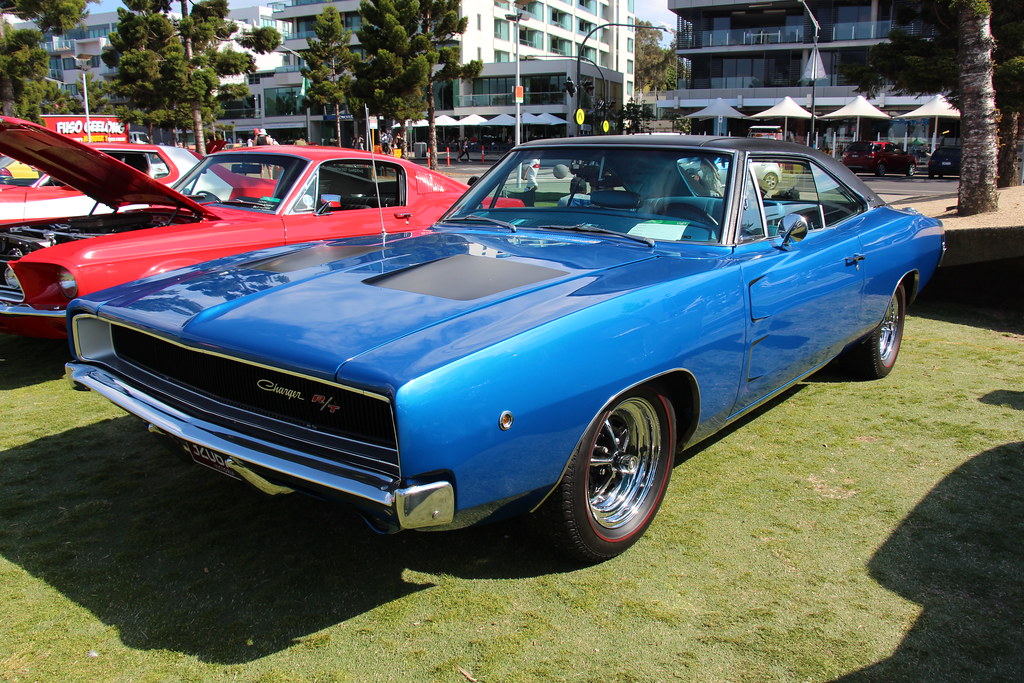
4. **1968 Dodge Charger R/T**If the Pontiac GTO was the spark that ignited the muscle car era, then the 1968 Dodge Charger R/T was, without a doubt, “the inferno.” This beast was where muscle met motion, radiating power and attitude from every single curve. With its bold “Coke bottle” profile, menacing hidden headlights, and sleek fastback design, it looked like it was ready to pounce, projecting a formidable presence that demanded attention. It had a presence “from every angle, like a snarling guard dog.”
People instinctively stepped aside just to watch it pass, a testament to its undeniable allure. Beneath that aggressively sculpted exterior lay a heart of pure thunder: its 440 Magnum V8 engine delivered “thrilling performance that muscle car fans craved.” This monumental power allowed it to command the road with an authority that few others could match.
But for those who wanted the ultimate, the mighty 426 Hemi V8, “rated at 425 hp but notoriously underestimated,” transformed the Charger into something even more fearsome. With that engine, it felt like “a freight train pulling through a tight corner, completely unbothered by hesitation,” creating “crushing pressure on the pavement” with every inch. Its raw capabilities made it a true force to be reckoned with.
Before it conquered countless streets, the Charger solidified its place in pop culture history through its famous car chase in the movie *Bullitt*, cementing its legend even further. With its aggressive design and raw, unadulterated power, the ’68 Charger became the quintessential symbol of rebellious performance, earning its revered status as a true legend in automotive circles. Drivers held the wheel with purpose, knowing they commanded “raw strength wrapped in a showroom body, the kind of car a movie villain would drive right before blowing something up.”
Car Model Information: 2020 Jeep Wrangler Sport
Name: Dodge Charger
Caption: 1969 Dodge Charger
Manufacturer: Dodge
Production: 1966–1978,1981–1987,2005–present
ModelYears: 1966–1978,1982–1987,2006–present
Categories: 1960s cars, 1970s cars, 1980s cars, 2000s cars, 2010s cars
Summary: The Dodge Charger is a model of automobile marketed by Dodge in various forms over eight generations since 1966.
The first Charger was a show car in 1964. A 1965 Charger II concept car resembled the 1966 production version.
In the United States, the Charger nameplate has been used on mid-size cars, personal luxury coupes, subcompact hatchbacks, and full-size sedans.
Get more information about: Dodge Charger
Buying a high-performing used car >>>
Brand: Dodge Model: Charger R/T
Price: $25,000 Mileage: 54,707 mi.
Read more about: Legends of Asphalt: The Definitive Guide to the American Muscle Car, from the Iconic Pontiac Firebird to the Enduring Chevy Camaro

5. **1960 Cadillac Eldorado Biarritz**Step into a time machine and prepare to be dazzled, because during the 1950s and extending into the fabulous 1960s, the Cadillac Eldorado Biarritz wasn’t just a car; it was the ultimate, undisputed symbol of American grandeur. We’re talking about massive tailfin designs that reached for the sky, brilliant chrome trim that gleamed in the sunlight, and magnificent interior luxury features that made every ride feel like a red-carpet event. This was peak postwar American extravagance, a rolling statement of wealth, taste, and undeniable status.
This elegant machine became an instant icon, representing the very pinnacle of mid-century design and engineering. Its audacious styling communicated a sense of optimism and prosperity, embodying the American dream on wheels. Every detail, from the gleaming brightwork to the sophisticated cabin, bespoke an era where grand statements were made without apology.
But don’t let its opulent exterior fool you into thinking it was all show and no go. Beneath that bold, majestic presence, a powerful V8 engine purred, delivering a ride so smooth and effortless, it was truly “fit for royalty.” As a convertible, the Biarritz wasn’t merely a mode of transportation; it was an experience, an event, a grand gesture. It effortlessly combined lavish comfort with a commanding road presence, making every journey a parade.
The Eldorado Biarritz transcended mere machinery to become a cultural icon, perfectly encapsulating the glamour of a bygone automotive era. Its enduring legacy lies not just in its stunning aesthetics and luxurious appointments, but in its ability to transport you back to a time when cars were designed to be dreams made real, symbolizing the pinnacle of American luxury and design innovation. It’s the kind of car that inspires awe, even today, proving that true style is timeless.
Car Model Information: 2020 Jeep Wrangler Sport
Caption: 1963 Cadillac Eldorado Convertible
Name: Cadillac Eldorado
Manufacturer: Cadillac
Production: 1952–2002
Layout: Front-engine, rear-wheel-drive layout
Aka: Cadillac Fleetwood Eldorado
Class: Personal luxury car
Successor: Cadillac CTS
Categories: 1960s cars, 1970s cars, 1980s cars, 1990s cars, 2000s cars
Summary: The Cadillac Eldorado is a luxury car manufactured and marketed by the Cadillac Motor Car Division of General Motors from 1952 until 2002, over twelve generations.
The Eldorado was at or near the top of the Cadillac product line. The original 1953 Eldorado convertible and the Eldorado Brougham models of 1957–1960 had distinct bodyshells and were the most expensive models offered by Cadillac during those years. The Eldorado was never less than second in price after the Cadillac Series 75 limousine until 1966. Beginning in 1967, the Eldorado retained its premium position in the Cadillac price structure, but was manufactured in high volumes on a unique, two-door personal luxury car platform.
The Eldorado carried the Fleetwood designation from 1965 through 1972, and was seen as a modern revival of the pre-war Cadillac V-12 and Cadillac V-16 roadsters and convertibles.
Get more information about: Cadillac Eldorado
Buying a high-performing used car >>>
Brand: Cadillac Model: Eldorado Biarritz
Price: $25,000 Mileage: 54,707 mi.
Read more about: Classic Cars Worth a Fortune: See the Models Skyrocketed in Value
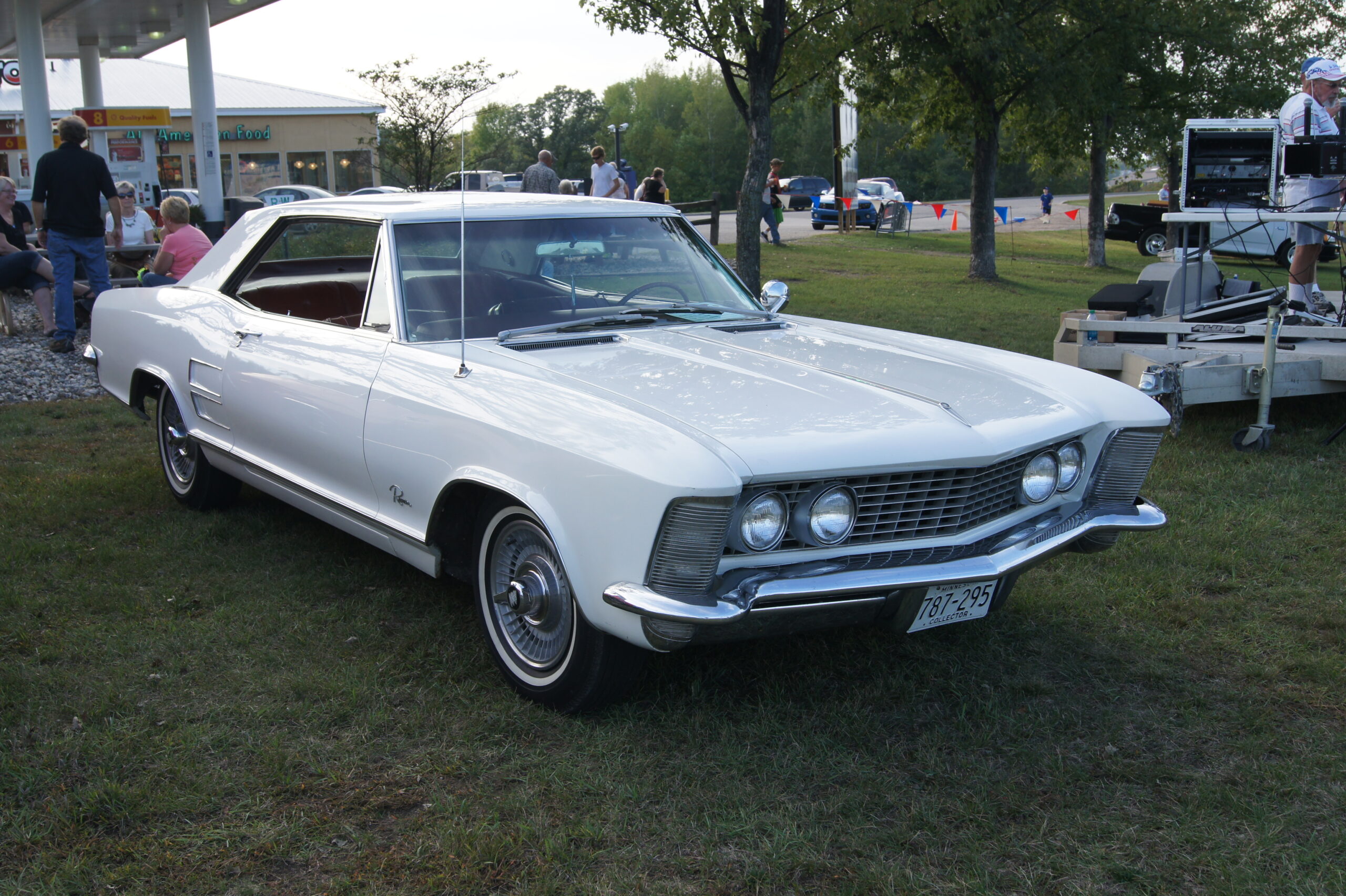
6. **1963 Buick Riviera**Prepare to be captivated by the 1963 Buick Riviera, a truly groundbreaking personal luxury car that arrived on the scene like a breath of fresh air, effortlessly merging refined elegance with seriously impressive performance. Its crisp, sculpted lines, featuring those subtle hidden headlights that would become a signature, immediately set it apart, attracting discerning drivers who craved both undeniable style and robust substance.
This wasn’t just another large sedan; it was an “elegant alternative” to large sedans, combining a compact, yet imposing, look with truly luxurious riding capabilities. The Riviera’s innovative design signaled a new direction for luxury automobiles, proving that sophistication didn’t have to mean sacrificing a dynamic driving experience. Its sharp “coke-bottle” lines quickly distinguished it from its peers.
The Riviera’s blend of performance and sophisticated styling made it an instant standout in the competitive automotive world of the 1960s. Under the hood, powerful V8 engines provided the muscle, ensuring that its graceful exterior was matched by an equally engaging driving experience. Its luxurious interior and commanding presence on the road continue to charm enthusiasts, showcasing a masterful balance that few cars of its era could achieve, truly combining “personal-luxury elegance with muscle-car strength.”
This car’s innovative design wasn’t just a fleeting trend; it left a lasting impression, influencing automotive styling for years to come and firmly securing its place as a design icon of the 1960s. The Riviera reflects the era’s fascination with power and grace, a testament to thoughtful engineering and bold aesthetics. As a classic, it continues to symbolize a moment when luxury, performance, and groundbreaking design converged to create something truly unforgettable.
Car Model Information: 1971 Buick Riviera
Caption: 1963 Buick Riviera
Name: Buick Riviera
Predecessor: Buick Super
Manufacturer: Buick
ModelYears: 1963–1993,1995–1999
Class: Personal luxury car
Categories: 1960s cars, 1970s cars, 1980s cars, 1990s cars, All articles with specifically marked weasel-worded phrases
Summary: The Buick Riviera is a personal luxury car that was marketed by Buick from 1963 to 1999, with the exception of the 1994 model year.
As General Motors’ first entry into the personal luxury car market segment, the Riviera was highly praised by automotive journalists upon its high-profile debut. It was a ground-up design on a new GM E platform debuting for the 1963 model year and was also Buick’s first unique Riviera model.
Unlike its subsequent GM E platform stablemates, the Oldsmobile Toronado and Cadillac Eldorado, the Riviera was initially a front engine/rear-wheel drive platform, switching to front-wheel drive starting with the 1979 model year.
While the early models stayed close to their original form, eight subsequent generations varied substantially in size and styling. A total of 1,127,261 Rivieras were produced.
The Riviera name was resurrected for two concept cars that were displayed at auto shows in 2007 and in 2013.
Get more information about: Buick Riviera
Buying a high-performing used car >>>
Brand: Buick Model: Riviera
Price: $22,499 Mileage: 91,150 mi.
Read more about: Beyond the Hype: 14 Classic Cars That Haven’t Held Their Value in Today’s Market
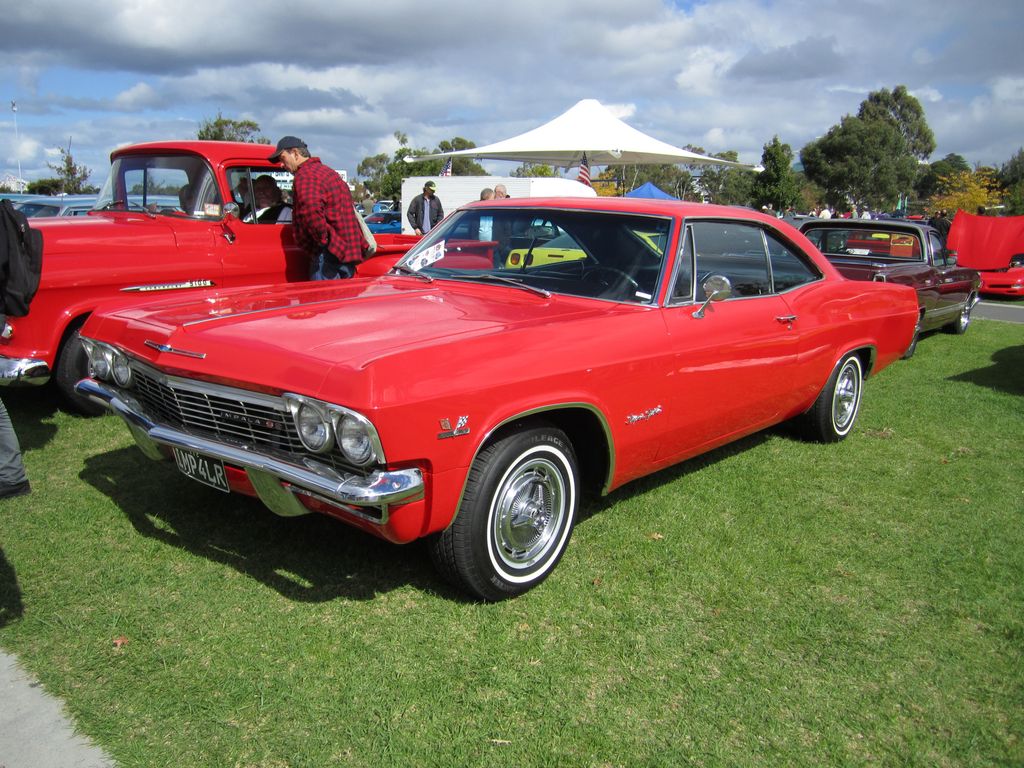
7. **1965 Chevrolet Impala SS**The 1965 Chevrolet Impala SS stepped onto the stage and absolutely nailed the delicate balance, perfectly blending full-size luxury with genuine muscle car performance, making it an undeniable standout in the dynamic 1960s automotive landscape. With its sleek, expansive lines, a wide, confident stance, and an impressive range of powerful V8 engines, it masterfully offered both sumptuous comfort and exhilarating excitement.
This was a car that could effortlessly cruise with the family one moment and tear up the pavement the next. It offered “both comfort and excitement,” demonstrating a versatility that was rare among its peers. Its design captivated, portraying a sense of understated power that appealed to a wide demographic, making it a favorite for both daily commutes and weekend thrills.
What truly set the Impala SS apart was its appeal to such a broad audience. Its smooth, confident ride captivated both families looking for a reliable, stylish cruiser and hardcore gearheads craving that unmistakable V8 rumble and raw power. It proved that you didn’t have to sacrifice elegance for brute force; you could have it all, wrapped in a package that oozed American cool. This adaptability made it more than just a bestselling model; it forged a deeper connection with drivers from all walks of life.
The Impala SS wasn’t merely a car; it blossomed into a genuine cultural icon, cementing its legacy in American automotive history through its immortality in music, movies, and the vibrant lowrider culture. Its enduring appeal lies in its ability to represent both accessible luxury and potent performance, a true testament to its thoughtful design and powerful heart. It’s a classic that continues to resonate, reminding us of a golden era when cars were built to inspire joy and command respect, both on the highway and in our collective imagination.
Read more about: 13 Underappreciated Wagons: Unearthing Automotive Utility’s Hidden Gems
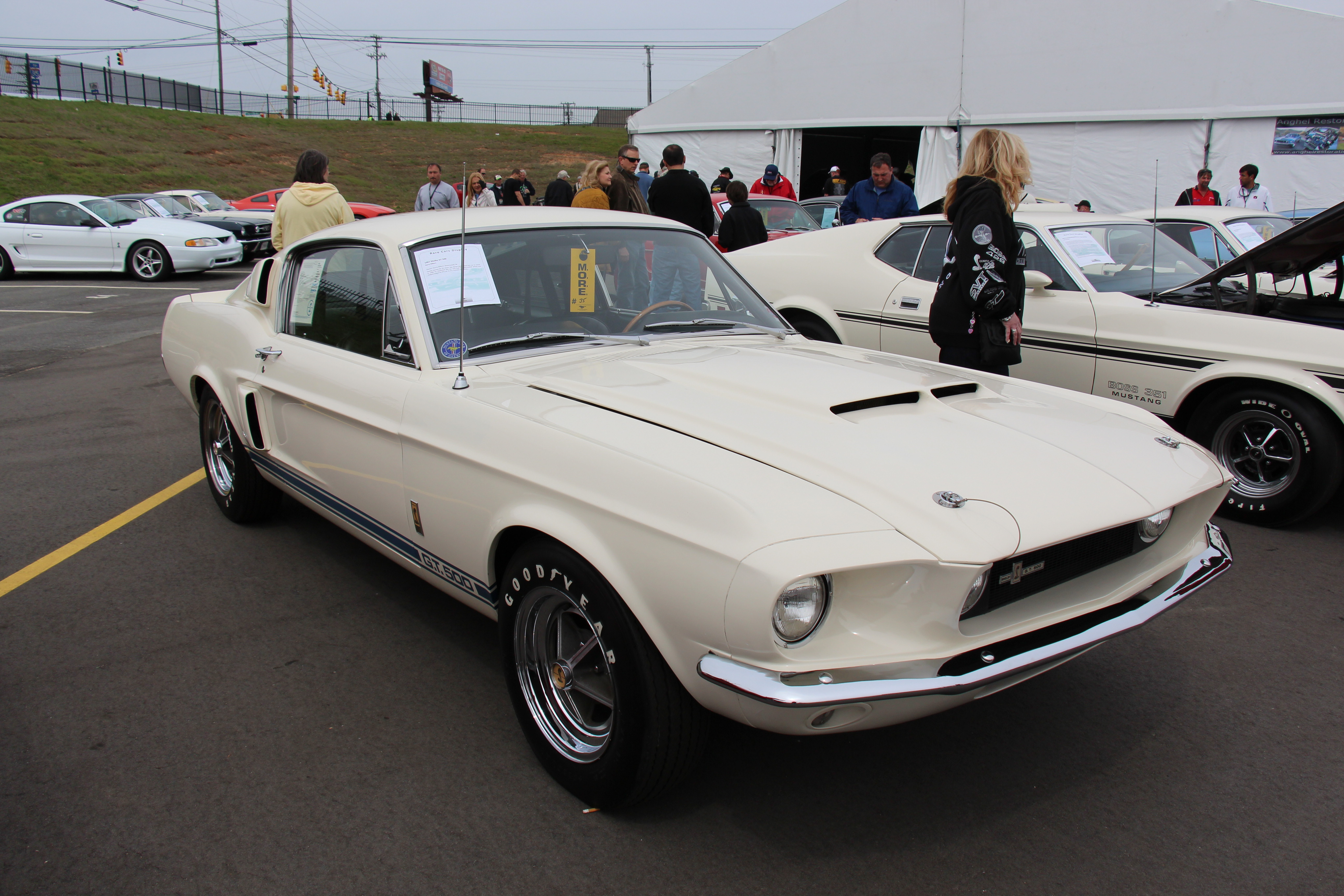
8. **1967 Shelby GT500**Carroll Shelby, the legendary racer, wasn’t content with just a fast car; he wanted a *faster* car, and boy, did he deliver with the 1967 Shelby GT500! This wasn’t just another Mustang; it was the original concept injected with serious performance DNA, elevating the iconic pony car to thrilling new heights. Imagine a massive 428-cubic-inch V8 roaring under the hood, ready to conquer any road—or track—you dared to challenge.
The GT500 didn’t just have power; it wore its aggression like a badge of honor. With its bold stance, unmistakable hood scoops, and those iconic racing stripes, its styling was a perfect match for the raw power beneath. This machine was pure, unadulterated muscle, screaming “track-ready engineering” from every angle. It quickly became the stuff of dreams for muscle enthusiasts, promising exhilarating performance and a commanding presence.
To this day, the 1967 Shelby GT500 stands as an enduring symbol of American automotive excellence, a living testament to Shelby’s incredible racing achievements and his vision for ultimate performance. It represents the absolute peak of 1960s pony-car excitement, a beautiful blend of power and undeniable style. Its legacy as an American muscle icon continues to captivate collectors and admirers, proving that boldness and innovation truly create timeless legends.
Read more about: Beyond the Icons: Unearthing 14 Underappreciated Muscle Cars That Deserve Your Attention
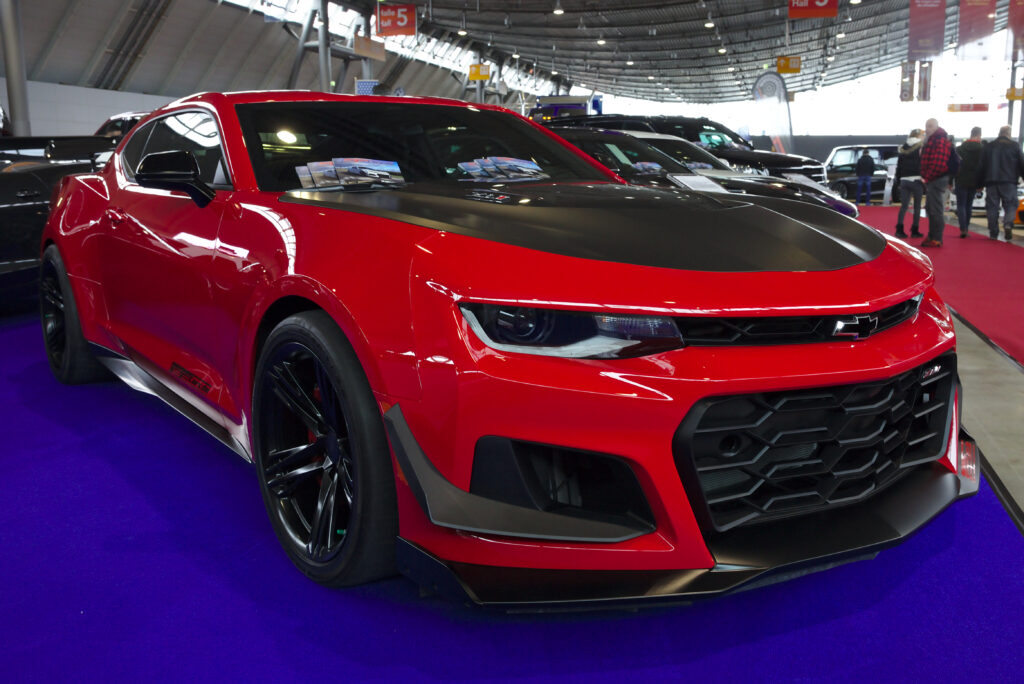
9. **1969 Chevrolet Camaro Z/28**Get ready to rev your engines for the 1969 Chevrolet Camaro Z/28, a car that didn’t just enter the muscle car wars—it charged in with a defiant stance and athletic lines! This beauty was a direct shot across the bow to its rivals, particularly the Mustang, showcasing Chevrolet’s bold ambition. While originally designed to achieve Trans-Am racing goals, it quickly won hearts on the street, proving its dual nature as a track monster and a stylish cruiser.
What made the Z/28 a legend? Its secret weapon was a high-revving 302-cubic-inch V8 engine, combined with optimized handling that made it a pure joy to drive. It delivered serious performance in a compact, stylish package, proving that you didn’t need to be the biggest to be the baddest. This car was all about precision, agility, and a thrilling responsiveness that set it apart.
The Z/28’s aggressive characteristics weren’t just for show; they reflected its commitment to dominance. Today, it holds its place as a prized classic, embodying a golden era of American performance and Chevrolet’s fearless dive into the competitive world of high-octane machines. It’s a testament to engineering prowess and a raw, engaging driving experience that still excites enthusiasts decades later.
Car Model Information: 2020 Jeep Wrangler Sport
Name: Chevrolet Camaro (fourth generation)
Caption: 1993 Chevrolet Camaro Z28
Manufacturer: Chevrolet
Production: November 1992 – August 27, 2002
ModelYears: 1993–2002
Assembly: Sainte-Thérèse, Quebec
Class: Pony car,Muscle car
BodyStyle: ubl
Platform: GM F platform
Related: ubl
Layout: Front-engine, rear-wheel drive layout
Engine: ubl
Transmission: ubl
Wheelbase: cvt
Length: ubl
Width: cvt
Height: ubl
Weight: cvt
Predecessor: Chevrolet Camaro (third generation)
Successor: Chevrolet Camaro (fifth generation)
Designer: ubl
Categories: 2000s cars, All articles needing additional references, All articles with dead external links, All articles with failed verification, Articles needing additional references from July 2020
Summary: The fourth-generation Chevrolet Camaro, colloquially known as the “Catfish Camaro”, is a pony car that was produced by American automobile manufacturer General Motors for the 1993 through 2002 model years. It was introduced on an updated F-body platform but retained the same characteristic since the first-generation’s introduction back in 1967: two doors, coupe or convertible bodystyles, rear-wheel drive, and a choice of 6-cylinder and V8 engines. The Camaro was revised in 1998 with both exterior and engine changes. General Motors discontinued production of the fourth generation of the Camaro due to slow sales, a deteriorated sports coupé market, and plant overcapacity.
Get more information about: Chevrolet Camaro (fourth generation)
Buying a high-performing used car >>>
Brand: Chevrolet Model: Camaro Z/28
Price: $25,000 Mileage: 54,707 mi.
Read more about: Timeless Icons: 14 Classic 1960s Cars That Continue to Captivate Enthusiasts and Turn Heads
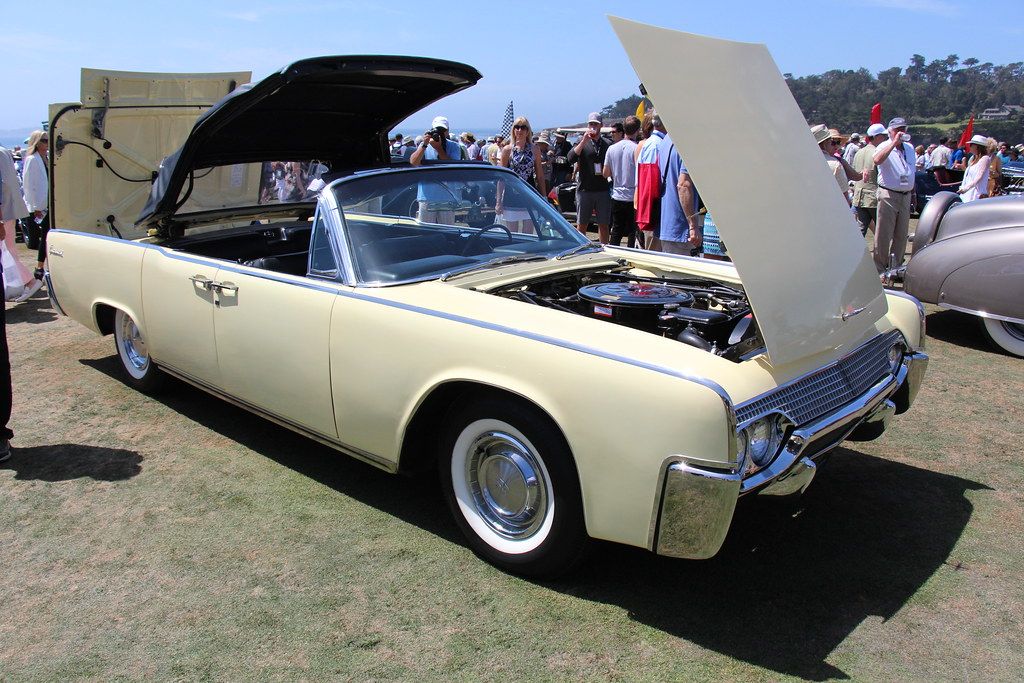
10. **1961 Lincoln Continental**Alright, let’s talk about pure class and sophistication! The 1961 Lincoln Continental isn’t just a car; it’s a rolling masterpiece that absolutely epitomizes 1960s American luxury. With its clean, slab-sided styling and those incredibly iconic ‘suicide doors’ (officially known as rear-hinged doors, but we all know the cool name!), this car was an instant head-turner. It wasn’t just setting trends; it was setting an entire design language that would influence generations of automobiles.
Step inside, and you’re transported to an era of unparalleled opulence and prestige. The Continental’s elegance and sophistication were perfectly matched by its incredibly spacious interior, offering a ride so smooth, you’d think you were gliding on air. This was the car of choice for dignitaries and celebrities, a symbol of high-status and refined taste that announced your arrival without saying a single word.
The design genius of the 1961 Lincoln Continental continues to be celebrated today, making it a highly sought-after piece for collectors and an enduring symbol of luxury and innovation. It wasn’t just a mode of transport; it was a statement, a testament to American craftsmanship and a vision of automotive excellence that remains timeless. This Continental truly captured the spirit of an era where grand statements were made with elegant precision.
Car Model Information: 2018 Lincoln Continental Reserve
Name: Lincoln Continental
Caption: 2019 Lincoln Continental
Manufacturer: Lincoln Motor Company
Production: 1939–1942,1946–1948,1956–2002,2016–2020
ModelYears: 1940–1942,1946–1948,1958–1980,1982–2002,2017–2020
Class: Full-size car,luxury car
Layout: Longitudinal engine,Front-engine, rear-wheel-drive layout
Categories: 1930s cars, 1940s cars, 1950s cars, 1960s cars, 1970s cars
Summary: The Lincoln Continental is a series of mid-sized and full-sized luxury cars produced between 1939 and 2020 by Lincoln, a division of the American automaker Ford. The model line was introduced following the construction of a personal vehicle for Edsel Ford, who commissioned a coachbuilt 1939 Lincoln-Zephyr convertible, developed as a vacation vehicle to attract potential Lincoln buyers. In what would give the model line its name, the exterior was designed with European “continental” styling elements, including a rear-mounted spare tire.
In production for over 55 years across nine different decades, Lincoln has produced ten generations of the Continental. Within the Lincoln model line, the Continental has served several roles ranging from its flagship to its base-trim sedan. From 1961 to 1976, Lincoln sold the Continental as its exclusive model line. The model line has also gone on hiatus three times. From 1949 to 1955, the nameplate was briefly retired. In 1981, the Continental was renamed the Lincoln Town Car to accommodate the 1982 seventh-generation Continental. After 2002, the Continental was retired, largely replaced by the Lincoln MKS in 2009; in 2017, the tenth-generation Continental replaced the MKS.
As part of its entry into full-scale production, the first-generation Continental was the progenitor of an entirely new automotive segment, the personal luxury car. Following World War II, the segment evolved into coupes and convertibles larger than sports cars and grand touring cars with an emphasis on features, styling, and comfort over performance and handling. From 1956 to 1957, the Continental nameplate was the namesake of the short-lived Continental Division, marketing the 1956–1957 Continental Mark II as the worldwide flagship of Ford Motor Company; as a second successor, Ford introduced the Continental Mark series in 1969, produced over six generations to 1998.
Along with the creation of the personal luxury car segment, the Lincoln Continental marked the zenith of several designs in American automotive history. The Continental is the final American vehicle line with a factory-produced V12 engine (1948), the final four-door convertible (1967), and the final model line to undergo downsizing (for the 1980 model year).
American production of the Continental and MKZ, its only two sedans, ended in 2020 thereby making Lincoln a crossover/SUV-only brand in the US.
Get more information about: Lincoln Continental
Buying a high-performing used car >>>
Brand: Lincoln Model: Continental
Price: $25,000 Mileage: 66,241 mi.
Read more about: Beyond the Horizon: The 15 Most Comfortable Cars for Long Road Trips, Reviewed by Experts
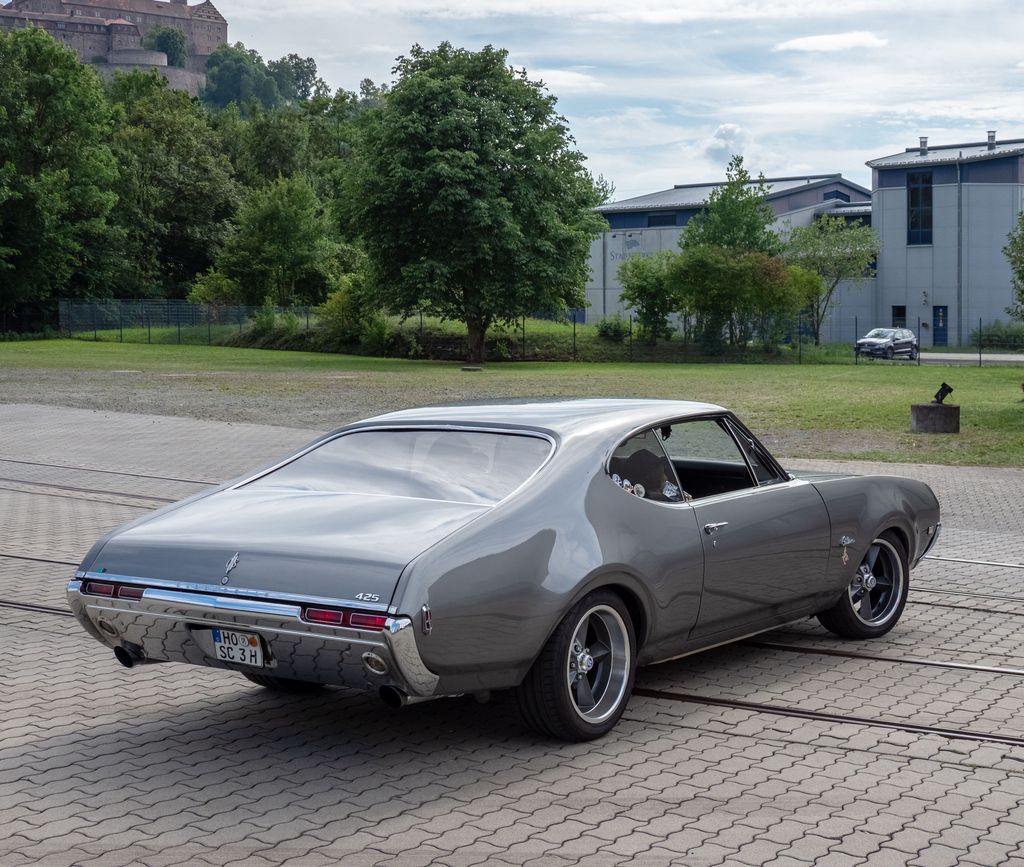
11. **1968 Oldsmobile 442**If you wanted muscle with a touch of class, the 1968 Oldsmobile 442 was your ride! This wasn’t just Oldsmobile’s entry into the roaring muscle-car craze; it was their formidable response, designed for drivers who appreciated both raw power and refined styling. Imagine a sleeper car that delivered serious big-block torque, all while carrying itself with an undeniable air of sophistication. It was the best of both worlds, truly.
The 442 earned its name and its reputation with a potent combination: a four-barrel carburetor, a four-speed manual transmission, and a dual exhaust system that sang a sweet song of horsepower. Beneath its sleek design, this car moved with a confidence that never felt harsh or impatient. It could conquer the drag strip one minute and cruise gracefully to the executive parking lot the next, proving that strength and refinement could absolutely work together.
This performance machine knew how to carry itself in any setting, embodying the spirit of the 1960s automotive revolution. The 442’s robust performance and sleek design have cemented its place as a favorite among muscle car enthusiasts, representing the era’s pursuit of speed, innovation, and a ride that felt like “wisdom on wheels.” It was, without a doubt, the gentleman’s hot rod.
Car Model Information: 1969 Oldsmobile 442
Name: Oldsmobile 442
Manufacturer: Oldsmobile
ModelYears: 1964–1980,1985–1987,1990–1991
Class: Muscle car
Layout: FR layout
Caption: 1971 Oldsmobile 442
Categories: 1960s cars, 1970s cars, 1980s cars, All articles with unsourced statements, Articles with short description
Summary: The Oldsmobile 4-4-2 is a muscle car produced by Oldsmobile between the 1964 and 1987 model years. Introduced as an option package for US-sold F-85 and Cutlass models, it became a model in its own right from 1968 to 1971, spawned the Hurst/Olds in 1968, then reverted to an option through the mid-1970s. The name was revived in the 1980s on the rear-wheel drive Cutlass Supreme and early 1990s as an option package for the new front-wheel drive Cutlass Calais.
The “4-4-2” name (pronounced “Four-four-two”) derives from the original car’s four-barrel carburetor, four-speed manual transmission, and dual exhausts. It was originally written “4-4-2” (with badging showing hyphens between the numerals), and remained hyphenated throughout Oldsmobile’s use of the designation. Beginning in 1965, the 4-4-2s standard transmission was a three-speed manual along with an optional two-speed automatic and four-speed manual, but were still badged as “4-4-2″s.
Because of this change, from 1965 on, according to Oldsmobile brochures and advertisements, the 4-4-2 designation referred to the 400 cubic inch engine, four-barrel carburetor, and dual exhausts. By 1968, badging was shortened to simply “442”, but Oldsmobile brochures and internal documents continued to use the “4-4-2” model designation.
Get more information about: Oldsmobile 442
Buying a high-performing used car >>>
Brand: Oldsmobile Model: 442
Price: $43,990 Mileage: 24,000 mi.
Read more about: Legends of Asphalt: The Definitive Guide to the American Muscle Car, from the Iconic Pontiac Firebird to the Enduring Chevy Camaro
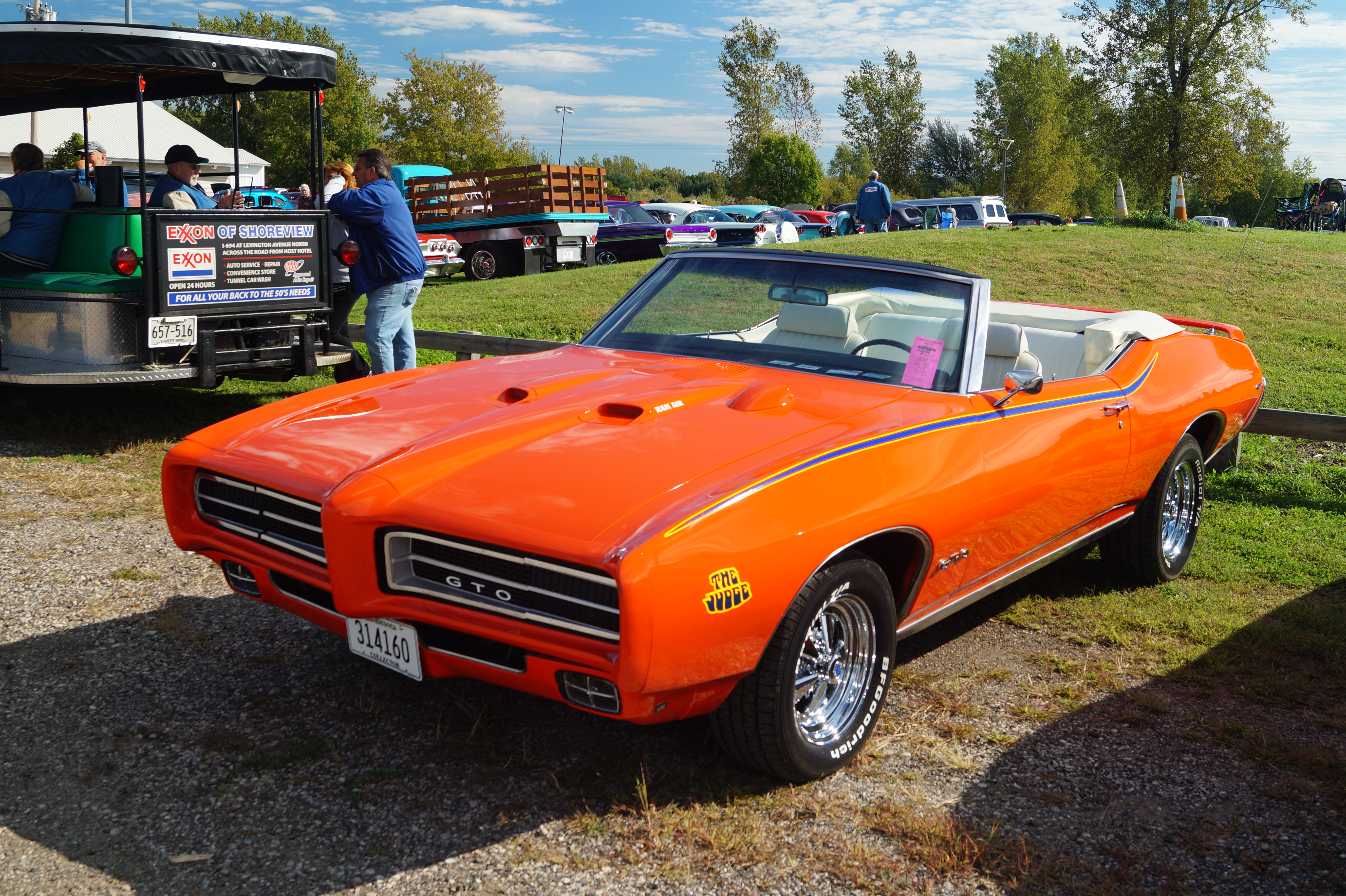
12. **1969 Pontiac GTO “The Judge”**Get ready to make a statement, because the 1969 Pontiac GTO “The Judge” rolled onto the scene with a playful, in-your-face attitude that demanded attention! Taking the already legendary GTO and dialing it up to eleven, “The Judge” piled on flamboyant graphics and high-performance options. This wasn’t just a car; it was a symbol of raw power draped in bold colors and a striking design that simply oozed excitement.
“The Judge” captivated enthusiasts who craved not just speed, but also a car with an undeniable personality. Its formidable presence was felt both on the road and under the hood, making it an absolute standout in the fiercely competitive muscle car era. Imagine pulling up in one of these—its iconic style and robust power instantly announced that you meant business, but you were having a blast doing it.
As a true classic, the 1969 Pontiac GTO “The Judge” perfectly embodies the spirit of 1960s automotive bravado. It continues to thrill collectors and admirers, celebrated for its iconic look and the sheer force it commanded. This car wasn’t afraid to be loud and proud, leaving an indelible mark on automotive history with its unique blend of power, performance, and undeniable flair.
Car Model Information: 1966 Pontiac GTO Coupe
Name: Pontiac GTO
Caption: 2005 Pontiac GTO
Manufacturer: Pontiac (automobile),Holden
Class: Mid-size car,Compact car,Mid-size car
Production: 1963–1974,2003–2006
Predecessor: Pontiac Tempest
Layout: Front-engine, rear-wheel-drive layout
ModelYears: 1964-1974 2004-2006
Categories: 1970s cars, 2000s cars, All articles with unsourced statements, Articles with short description, Articles with unsourced statements from October 2008
Summary: The Pontiac GTO is a front-engine, rear-drive, two-door, and four-passenger automobile manufactured and marketed by the Pontiac division of General Motors over four generations from 1963 until 1974 in the United States — with a fifth generation made by GM’s Australian subsidiary, Holden, for the 2004 through 2006 model years.
The first generation of the GTO is credited with popularizing the muscle car market segment in the 1960s. Some consider the Pontiac GTO to have started the trend with all four domestic automakers offering a variety of competing models.
For the 1964 and 1965 model years, the GTO was an optional package on the intermediate-sized Pontiac LeMans. The 1964 GTO vehicle identification number (VIN) started with 22, while the 1965 GTO VIN began with 237. The GTO was designated as a separate Pontiac model from 1966 through 1971 (VIN 242…). It became an optional package again for the 1972 and 1973 intermediate LeMans. For 1974, the GTO was an optional trim package on the compact-sized Ventura.
The GTO model was revived for the 2004 through 2006 model years as a captive import for Pontiac, a left-hand drive version of the Holden Monaro, itself a coupé variant of the Holden Commodore.
Get more information about: Pontiac GTO
Buying a high-performing used car >>>
Brand: Pontiac Model: GTO
Price: $59,991 Mileage: 4,408 mi.
Read more about: Beyond the Malaise: 15 Rare American Cars from the 1970s That Defied Expectations

13. **1966 Shelby Cobra 427**When legendary Carroll Shelby got his hands on a lightweight British AC Ace body and then stuffed it with a fire-breathing Ford V8 engine, automotive history was made. The result? The absolutely iconic 1966 Shelby Cobra 427, a masterpiece that redefined brutal speed and exhilarating performance. This wasn’t just a car; it was a pure, unadulterated beast on wheels, a true legend born from an ingenious fusion of two worlds.
The Cobra 427 was notoriously fast and, let’s be honest, quite hard to handle, which only added to its mystique and challenge. Its incredible combination of agility and overwhelming power made it a dominant force on the track and quickly cemented its status as a symbol of American ingenuity and fearless ambition. It was the kind of car that separated the drivers from the *drivers*, demanding respect and skill.
Even today, the 1966 Shelby Cobra 427 remains one of the most replicated designs in automotive history, a testament to its timeless appeal and groundbreaking engineering. Its enduring legacy is celebrated by collectors and racers alike, admired not just for its breathtaking performance, but for its raw, unfiltered driving experience. This classic truly represents the pinnacle of 1960s sports car engineering, a wild ride that continues to captivate hearts.
Read more about: Beyond the Icons: Unearthing 14 Underappreciated Muscle Cars That Deserve Your Attention
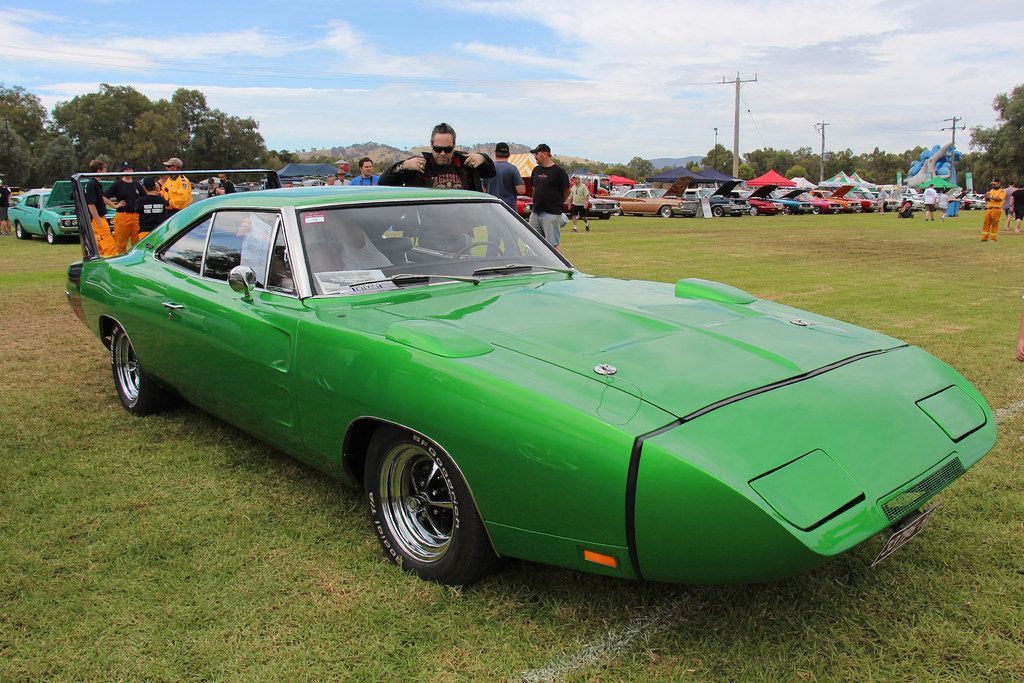
14. **1969 Dodge Charger Daytona**Prepare for a sight that will stop you in your tracks: the 1969 Dodge Charger Daytona! This wasn’t just a car; it was a radical statement built with one purpose in mind—NASCAR dominance. Just look at it: that giant rear wing and the incredibly aerodynamic nose cone were features so extreme, they were truly revolutionary for the era. This was Mopar’s fearless engineering prowess on full display, pushing the boundaries of what a muscle car could be.
This rare muscle machine wasn’t just about looks, though its aggressive styling was certainly unforgettable. The Daytona’s unique design features were all about performance, meticulously crafted to ensure its undeniable success on the race track. It became an instant legend, coveted by enthusiasts for its blistering speed and its unapologetically bold presence. Its very existence marked a pivotal moment of innovation and impact on racing history.
As a highly sought-after classic, the 1969 Dodge Charger Daytona remains a powerful symbol of the bold spirit of 1960s American muscle cars. Celebrated for its extreme rarity and raw power, it represents an era when engineers dared to dream big and build even bigger. The Daytona isn’t just a car you admire; it’s a testament to audacious design and an unyielding quest for victory, continuing to inspire awe among collectors and fans.
Car Model Information: 2020 Jeep Wrangler Sport
Name: Dodge Charger Daytona
Caption: 1969 Dodge Charger Daytona
Manufacturer: Dodge
Production: 1969–1970,2006–2009,2013,2017–2023
Class: Muscle car
Layout: FR layout
Categories: 1960s cars, 1970s cars, 2000s cars, All articles needing additional references, All articles with unsourced statements
Summary: Dodge produced three separate models with the name Dodge Charger Daytona, all of which were modified Dodge Chargers. The name was taken from Daytona Beach, Florida, which was an early center for auto racing and still hosts the Daytona 500, NASCAR’s premier event. The original Dodge Charger Daytona was designed to beat the competition in NASCAR racing. It was the first NASCAR vehicle to reach 200 miles per hour, which was a major milestone at the time.
Get more information about: Dodge Charger Daytona
Buying a high-performing used car >>>
Brand: Dodge Model: Charger Daytona
Price: $25,000 Mileage: 54,707 mi.
Read more about: Legends of Asphalt: The Definitive Guide to the American Muscle Car, from the Iconic Pontiac Firebird to the Enduring Chevy Camaro
The 1960s, a decade of incredible transformation, birthed automotive legends that continue to define cool. From the moment these machines roared to life, they weren’t just transporting people; they were transporting dreams, rebellion, and a boundless sense of freedom. Each of these American classics, whether a street-dominating muscle car or an opulent luxury cruiser, captured a piece of the era’s soul, leaving an indelible mark on highways and hearts. They prove that true style, exhilarating power, and groundbreaking design are truly timeless. So, here’s to the roaring ’60s, a golden age that gave us more than just cars – it gave us legends that will keep our engines revving for generations to come!


